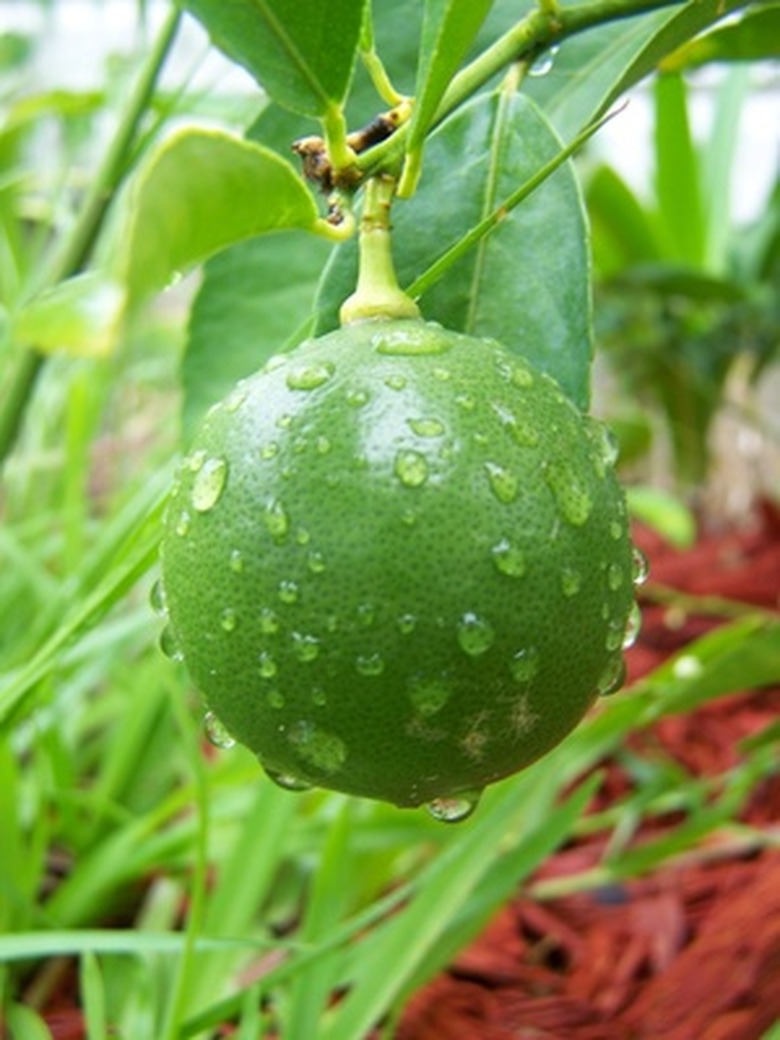The Best Lime Trees
As a citrus crop, limes are useful for flavoring foods and drinks. Originally grown in Malaysia, limes are both smaller and sweeter than lemons. Grown year-round, the lime was common on British sailing ships in the 19th century as a means of staving off scurvy (vitamin C deficiency), earning the sailors the nickname of "limeys."
Before planting a lime tree, study the climate history for your planting area. Extremely sensitive to cold, a lime tree will not survive freezing temperatures without protection.
Mexican lime
Also known as the key lime or the West Indian lime, this strain of lime was imported to the Americas by the Spanish. A small and bushy tree with thin branches, the Mexican lime tree has short sharp thorns. A thornless variety is available, but it bears noticeably less fruit. Limes from this tree are very small, usually not more than 2 inches in size, with a round shape. The lime juice is highly acidic and distinctive. This is the most sour of the limes (or even lemons) and has a bitter aftertaste.
- As a citrus crop, limes are useful for flavoring foods and drinks.
- This is the most sour of the limes (or even lemons) and has a bitter aftertaste.
Tahiti lime
Also known as the Bearss lime or Persian lime, this tree is larger than most lime trees reaching heights of 20 to 25 feet in good growing conditions. Limes from these trees are large and will continue to grow if left on the branch. This is a seedless tree, and the fruit looks like a lemon (except that it is green). The tree grows in two varieties, the Persian with oval fruit the size of an egg and the Bearss, which is seedless. Both will yellow with age but should be used while still green. The advantage to the Tahiti is that the fruit is larger and has a longer shelf life than other limes. Less acidic than key limes, this variety remains the most popular for everyday use.
- Also known as the Bearss lime or Persian lime, this tree is larger than most lime trees reaching heights of 20 to 25 feet in good growing conditions.
Limetta
The limetta tree, also known as sweet lime, bears a fruit that resembles lemons but without the mouth- puckering taste. Producing a mild and sweet juice, the fruit tastes like lemonade sans sugar. Limettas grow in three varieties and can be identified by the characteristic "nipple" on the end. Millsweet is the most popular variety and grows successfully in California. The fruit of a limetta is generally not available commercially. The tree is small, reaching only 15 feet in height and is often planted for ornamental purposes or as graft stock to carry more commercially popular varieties of lime.
